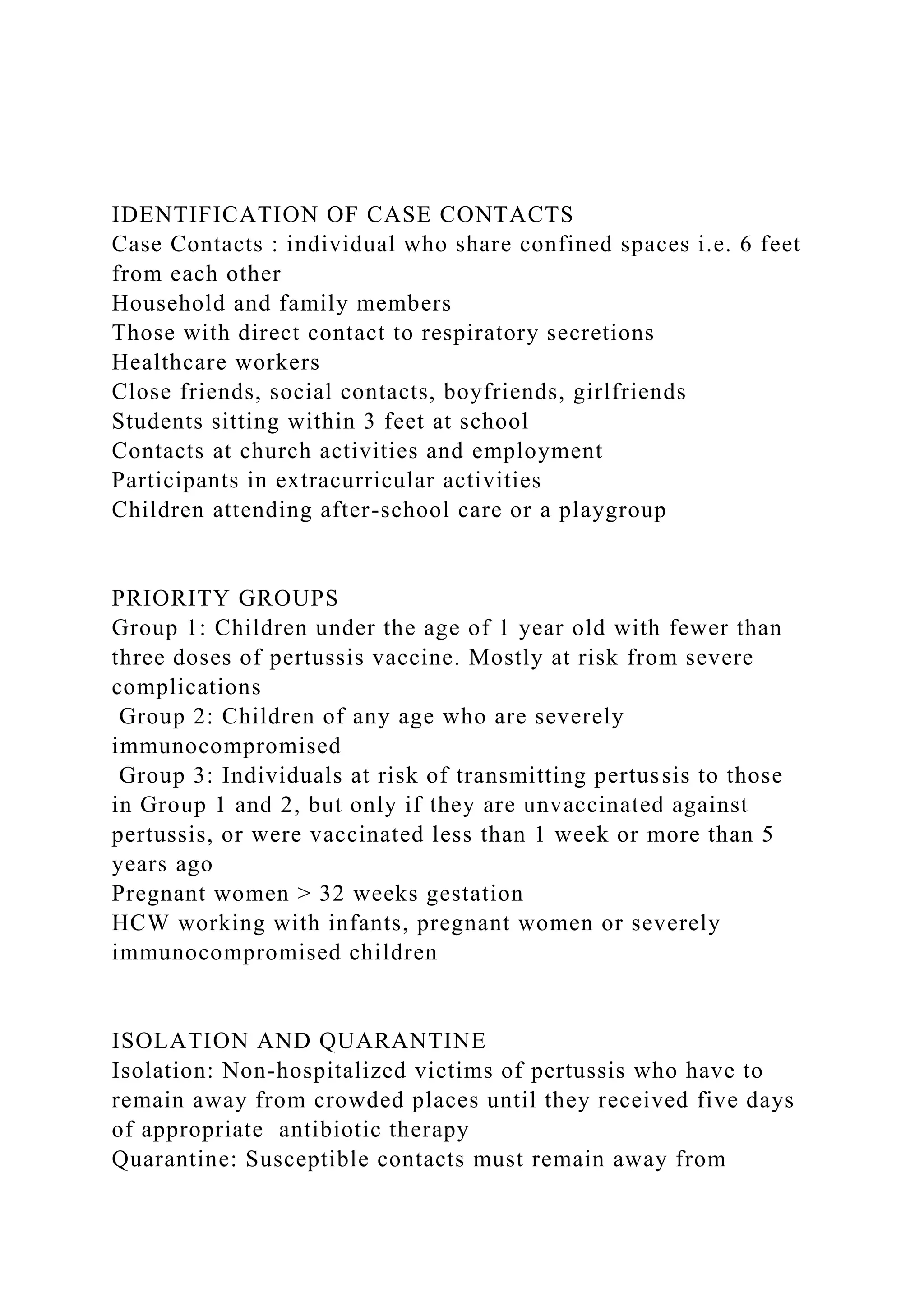Whooping cough, also known as pertussis, is a highly contagious respiratory infection that primarily affects infants and young children. This bacterial disease is characterized by severe coughing fits, which can lead to a whooping sound when the person inhales. Understanding the symptoms, causes, and prevention methods of whooping cough is crucial for safeguarding public health. In this article, we will delve into the details of this illness and provide essential tips to prevent its spread.
As vaccine hesitancy continues to rise in certain regions, there is growing concern about the resurgence of diseases such as measles and whooping cough. With vaccination rates declining and potential cuts to public health infrastructure, experts warn that these preventable illnesses could become more widespread. It's important to stay informed about the risks associated with whooping cough and take necessary precautions to protect yourself and your loved ones.
Understanding Whooping Cough
Whooping cough, or pertussis, is caused by the Bordetella pertussis bacterium. This infection spreads easily through airborne droplets released during coughing or sneezing. Infants and young children are particularly vulnerable to the disease, which can be life-threatening without proper treatment. Symptoms typically appear within 5 to 10 days after exposure but may take up to three weeks to manifest fully.
Early signs of whooping cough resemble those of a common cold, including runny nose, mild fever, and occasional cough. However, as the disease progresses, individuals experience severe coughing spells that may result in vomiting or difficulty breathing. The characteristic whooping sound occurs when the infected person tries to inhale deeply after a prolonged coughing fit.
In addition to affecting young children, whooping cough can also impact adolescents and adults, especially those with weakened immune systems. While the severity of symptoms tends to decrease with age, it is still vital to seek medical attention if you suspect an infection. Early diagnosis and treatment can significantly reduce complications and prevent further transmission.
Prevention Through Vaccination
Vaccination remains the most effective way to prevent whooping cough. The DTaP vaccine is administered to children under seven years old, while the Tdap booster shot is recommended for older children and adults. Ensuring timely vaccinations not only protects individuals but also contributes to herd immunity, reducing the overall risk of outbreaks.
Vaccine hesitancy has been identified as a major factor contributing to recent increases in preventable diseases like measles and whooping cough. Misinformation and fear surrounding vaccines have led some parents to delay or refuse immunizations for their children. Public health officials emphasize the importance of addressing these concerns through education and open dialogue.
Healthcare providers play a critical role in promoting vaccination awareness and dispelling myths. By discussing the benefits and safety of vaccines with patients, they can help build trust and encourage compliance with recommended immunization schedules. Additionally, staying informed about local vaccination laws and guidelines ensures that communities remain protected against infectious diseases.
Managing Symptoms and Seeking Treatment
If you or someone in your household develops symptoms of whooping cough, prompt medical evaluation is essential. A healthcare provider may perform a physical examination and order diagnostic tests to confirm the presence of the Bordetella pertussis bacterium. Antibiotics are often prescribed to treat the infection and shorten its duration.
In addition to medication, several home remedies can alleviate discomfort caused by whooping cough. Consuming honey may soothe irritated throats and calm persistent coughs. Resting adequately allows the body to heal faster and reduces fatigue associated with prolonged illness. Staying hydrated by drinking plenty of fluids helps thin mucus secretions, making them easier to expel.
It's important to note that while over-the-counter cough suppressants might provide temporary relief, they do not address the underlying cause of whooping cough. Following your doctor's advice regarding treatment options ensures optimal recovery and minimizes potential complications. Regular follow-up appointments monitor progress and adjust therapies as needed.
Monitoring Regional Trends
Data from state health departments reveal fluctuating trends in whooping cough cases across different regions. For instance, Washington State reports weekly updates on pertussis incidence, highlighting seasonal variations and epidemic thresholds. These statistics aid public health officials in assessing outbreak risks and implementing targeted interventions.
In Minnesota, the Department of Health emphasizes the significance of maintaining high vaccination coverage levels to control pertussis spread. Their initiatives focus on educating parents about the importance of timely immunizations and reinforcing school entry requirements. Collaborative efforts between healthcare providers and community organizations strengthen surveillance systems and enhance response capabilities.
Nationally, the Centers for Disease Control and Prevention (CDC) serves as a valuable resource for information on pertussis prevention and management. They offer comprehensive guidance for both the general public and healthcare professionals, ensuring consistent messaging and evidence-based practices. Staying updated on CDC recommendations equips individuals with knowledge to make informed decisions about their health.

